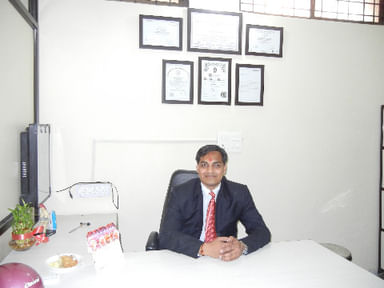Dr. Arun Partani
Personal Statement
I am a caring, skilled professional, dedicated to simplifying what is often a very complicated and confusing area of health care using the latest and best knowledge, personalised patient attention , thorough clinical examination and genuine , ethical medical practice..read more
Doctor Information
Speciality
- Orthopedic Doctor
Other treatment areas
- Shoulder Specialist
- Orthopedic Surgeon
- Joint Replacement Surgeon
- Shoulder Surgeon
Education
- DNB (Orthopedics) , SDMH Jaipur , 2011
- Fellowship in Joint Replacement , AGA, Germany , 2011
- MS - Orthopaedics , SMS Medical College Jaipur , 2010
Past Experience
- Joint Replacement Surgeon at Breach Candy Hospital Mumbai
- Arthroscopic & Sports Surgeon at Sports Clinic Hannover Germany
- On Field Sports Surgeon To Cater To Injury of Any Player On Field at IPL 2013
Languages spoken
- English
- Hindi
Professional Memberships
- Indian Arthroscopy Society
- Indian Orthopaedic Association
- Indian Society For Hip & Knee Surgeons
- Bombay Orthoapedic Association
- indian Arthroplasty Association
Clinic Location
M-21, Mahesh Colony, JP Underpass, Tonk Fatak
Clinic of Dr. Arun
| Clinic's Name | Fees |
|---|---|
| Partani Clinic | ₹ 500 |
| Fortis hospital | ₹ 700 |
Book Clinic Appointment with Dr. Arun Partani
Read what people are saying about Dr. Arun Partani
Health Tips
When Is It Time to Have a Total Joint Replacement?
Debilitating inflammation in the joints and its surrounding tissue usually characterize arthritis. This ailment can greatly weaken the body. At the point when joints are seriously influenced by joint pain, there are a number of treatment methods t......read more
Osteoarthritis Pain - Symptoms and Causes of OA Pain!
What are the symptoms of osteoarthritis in relation to the different affected areas? An osteoarthritis is a form of arthritis which means unexpected inflammation of the joints/muscles, which is usually very painful. This form of arthritis is not c......read more
Know Everything About Knee Replacement!
Knee is a hinge joint where the lower leg bone tibia meets the thigh bone femur. During osteoarthritis, cartilage or ligament defects and degenerative arthritis, knee replacement surgery is recommended world-wide to get relief from extreme pain. K......read more
Hip Replacement Surgery - Benefits Of It!
Human bones are continuously being removed and formed which is necessary for its proper maintenance. However, in certain cases, especially with aging, some bones and joints will be worn down to an extent where the body will not be able to reform t......read more
How Knee Replacement Procedure Is Performed?
Knee replacement is a procedure where the weight carrying surface of knee joint is replaced surgically to ease the pain or any disability. People suffering from osteoarthritis, rheumatoid arthritis or psoriatic arthritis undergo knee replacement. ......read more



